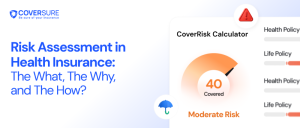Life in India is a vibrant tapestry woven with aspirations, dreams, and a deep sense of family. But amidst the hustle and bustle, a silent threat lurks – critical illness. According to a 2020 study by the Indian Council of Medical Research (ICMR), non-communicable diseases (NCDs) account for over 60% of deaths in India, with illnesses like cancer and heart disease being major contributors. This article aims to empower you with knowledge and practical steps to navigate the challenges of critical illness and emerge stronger.
What is a Critical Illness?
It is a severe medical condition that disrupts your life significantly. These illnesses often require prolonged and expensive treatments, impacting not just your physical well-being but also your financial and emotional stability.
Common Critical Illnesses in India:
The healthcare landscape in India is witnessing a rise in these illnesses. Here are some of the most prevalent ones, according to a 2021 report by the National Cancer Registry Programme (NCRP):
- Cancer: Cancers of the lung (11.6%), cervix (9.4%), and mouth (5.4%) are some of the leading concerns.
- Cardiovascular Diseases (CVDs): Heart attacks, strokes, and coronary artery disease pose a significant threat, with CVDs accounting for 28% of all deaths in India as per ICMR data.
- Kidney Diseases: Diabetes and hypertension are major risk factors for kidney failure.
- Neurological Disorders: Stroke, Alzheimer’s disease, and Parkinson’s disease are on the rise.
- Critical Illness of the Internal Organs: Liver cirrhosis and major organ transplants fall under this category.
Why is Critical Illness a Concern in India?
Several factors contribute to the rising burden of critical illness in India:
- Lifestyle Changes: Urbanization and a shift towards a more sedentary lifestyle with unhealthy eating habits increase the risk of chronic diseases like diabetes and heart disease, which can lead to critical illnesses.
- Ageing Population: As India’s population ages, the risk of age-related critical illnesses like cancer also increases.
- Environmental Factors: Pollution and exposure to toxins can contribute to the development of critical illnesses.
- Limited Awareness: A lack of awareness about the early signs and symptoms of critical illnesses often leads to delayed diagnosis and treatment, making the condition more challenging to manage.
The Financial Impact of Critical Illness:
A critical illness diagnosis can be financially devastating. Treatment costs for these illnesses can be exorbitant, encompassing hospitalisation, medication, surgery, and rehabilitation. This can deplete one’s savings and force individuals into debt. Additionally, these illnesses often results in a loss of income due to the inability to work. This doubles up the financial burden for the patient and their family.
Preparing for the Unexpected: How Critical Illness Insurance Can Help
While we cannot predict the future, we can take proactive measures to mitigate the financial impact of an illness. This is where critical illness insurance plays a crucial role.
What is Critical Illness Insurance?
Critical illness insurance is a type of insurance policy that provides a lump sum payout upon diagnosis of a specified critical illness covered by the policy. This financial assistance can help bridge the gap between treatment costs and lost income, ensuring you can focus on recovery without the additional financial stress.
Benefits of Critical Illness Insurance:
- Financial Security: The lump sum payout from a critical illness insurance policy can help cover the costs of treatment, medication, and rehabilitation.
- Peace of Mind: Knowing you have a financial safety net in place can provide immense peace of mind during a difficult time.
- Maintain Financial Stability: The right insurance can help prevent financial hardship by assisting with continued living expenses even when income is disrupted due to illness.
- Early Detection and Treatment: Some plans offer additional benefits like coverage for early detection tests, encouraging proactive health measures.
Choosing the Right Insurance Plan:
With numerous insurance plans available in the market, choosing the right one can seem overwhelming. Here are some key factors to consider:
- Sum Insured: Choose a sum insured that adequately covers the potential costs of treatment in your city or region.
- Coverage Options: Consider essential features like coverage for specific illnesses, pre and post-hospitalization expenses, and income replacement benefits.
- Claim Settlement Process: Research the insurer’s claim settlement process and reputation for timely claim resolution.
- Renewal Options: Understand the policy renewal terms and conditions to ensure continued coverage as you age.
- Premiums: Choose a plan that fits your budget while offering comprehensive coverage. Remember, it’s better to invest in a slightly higher premium for better coverage than face financial difficulties.
By understanding critical illness and its potential impact, you can take proactive steps to safeguard your financial well-being. Remember, early detection and treatment are crucial for managing critical illness effectively.
For a more in-depth analysis, take advantage of our complimentary “Free Policy Review” service. Our team of IRDAI-certified CoverSure experts will thoroughly examine your existing health insurance plan. They will provide valuable insights into its strengths and weaknesses. This empowers you to make informed decisions about your health insurance needs.
Don’t delay – download the CoverSure app today and unlock a future of peace of mind!
Together, with knowledge and the right insurance plan, you can face any health challenge with confidence. Have you ensured the well-being of yourself and your loved ones?





